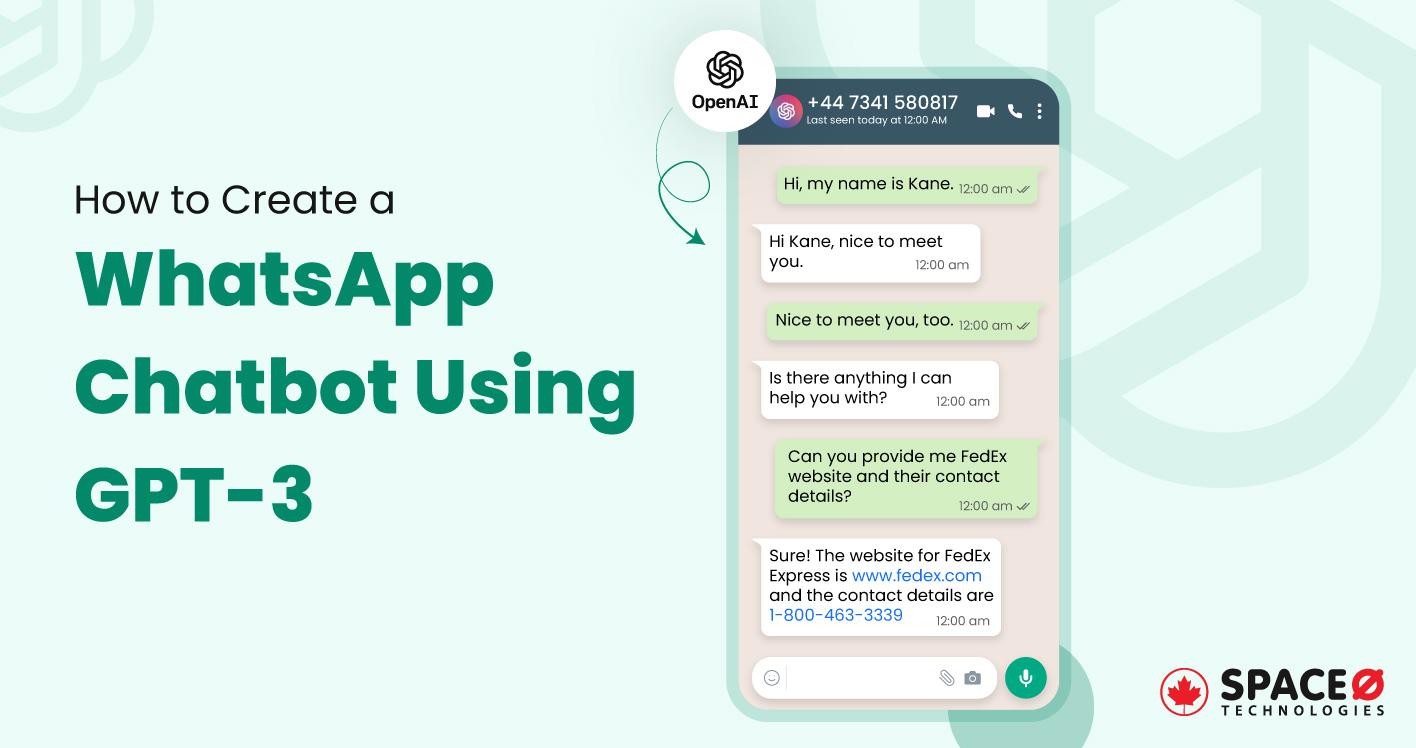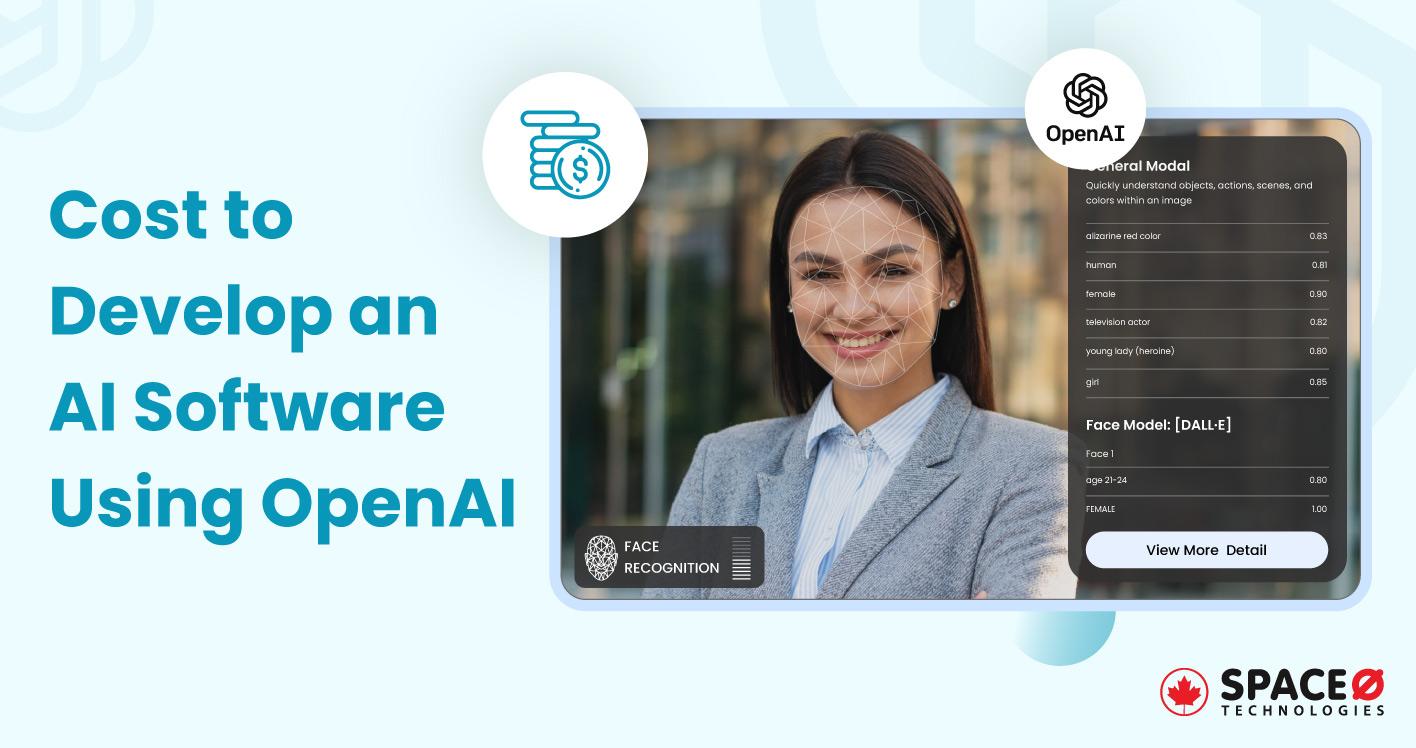
How to Create a WhatsApp Bot Using GPT-3 to Improve Customer Service
Are you a business owner and want to integrate OpenAI’s ChatGPT-3 into your WhatsApp business account? Or do you want to improve overall customer support service using GPT-3?
If yes, your research ends here.
As a prominent software development company, we understand the process of creating a WhatsApp bot using ChatGPT-3. So, if you are looking to make such a WhatsApp chatbot, you might have the following questions:
- What is the process of creating a WhatsApp bot using GPT-3?
- Is it easy to create a WhatsApp bot for your business?
- What data should be required to make such a chatbot?
So, let’s get started.
Table of Contents
A Complete Process to Create WhatsApp Bot Using GPT-3
Let’s know the complete process of building WhatsApp using OpenAI. The first step is to consult a company that provides software development services using OpenAI models like ChatGPT-3, DALL-E 2, and Codex.
Hire an AI Chatbot Development Company
To develop WhatsApp Chatbot using OpenAI, you need to hire experienced OpenAI software developers who understand the use of OpenAI’s APIs, data modeling, and fine-tuning of the dataset to get expected answers from the Chatbot.To hire an AI software development company, simply go to Upwork, Clutch, or Stack Overflow and list the best companies. Choose the most suitable company by performing basic research. Or you can hire Space-O to go ahead with your project development.Once you hire AI chatbot developers, you need to brainstorm and discuss your requirements.
Specifying Requirements and Project Planning
At this stage, you need to discuss your requirements with the AI chatbot development services providing company.
- Identifies and perform research on pain points that you want to resolve
- Discuss your specific users or scenarios you have about the WhatsApp chatbot
- The requirement analysis team defines the scope and objective of your project
- Discusses what type of information end-users are looking for from your WhatsApp chatbot
- Defines the timeline and budget of your project before developing your WhatsApp bot
- Assigns you a software development team with Data Scientists and NLP engineers
Collection and Cleaning of Data
Now, your hired developers and engineers collect the important data that the bot will use to learn from. The data should be relevant to the bot’s purpose to train the bot accordingly. Data includes information about customer service queries, product or service information, account information, technical support, and user guidance.
If the data is irrelevant, then it’s removed from the dataset which ensures avoiding any junk information. In addition, the data is properly set in a format so the bot can understand easily. Feeding all the data about your business queries and support to ChatGPT-3 model enables it to provide an answer in a proper structure with contextual understanding.
Fine-tuning of Custom Model
At this stage, the previously collected dataset gets verified by the team. Verification of the dataset enables the team to know whether the data is in the proper format so the ChatGPT-3 can understand. This whole process is pre-processing of the data. The pre-processing process includes tokenizing the data. It means breaking down the data into individual words or phrases and then encoded to be used by ChatGPT-3.By hiring ChatGPT developers, you can train pre-processed data into the ChatGPT model. In this training process, the ChatGPT-3 model is trained to learn and understand how to respond to queries or requests sent by end users. This training is done with the labeled data so it can learn and predict the label to new data.Furthermore, the fine-tuning of the model gets done to improve the response to a particular query. The fine-tuning process helps to make adjustments and improvements to the model.The improvement process includes
- Retraining the model with additional dataAdjusting the parametersCreating new datasets to train the model
So, the responses to queries and requests match the expectations. This way, the overall aim of providing personalized customer support service becomes easy.
Testing the Bot to Ensure to Get Expected Responses
Now, testing is done to know whether the trained model in ChatGPT-3 works fine and provides the expected results. This way, the bot’s response is measured to know if it is accurate.
Testing the bot is important as it allows us to know whether the chatbot understands the end-user’s queries properly. Moreover, if the chatbot understands the questions, then responds in human-like nature with accurate and proper information.
Integration of GPT-3 into Your WhatsApp Business Account
Once you have trained ChatGPT-3 with your custom model, you can integrate your business WhatsApp account with ChatGPT-3. The process of integrating WhatsApp with ChatGPT-3 is as follows.
- Creating a WhatsApp Business account with a valid phone number and configuring it as per business needs.
- Connecting the WhatsApp API with a chatbot by writing custom code into the server.
- For writing custom code to connect WhatsApp API and chatbot, the developers use the latest programming languages like Python, JavaScript, or Ruby.
- Integrating the ChatGPT-3 with the WhatsApp API to receive and send messages.
After integration, the configuration is done to know whether to make your WhatsApp chatbot work perfectly.
Testing and Deployment
After integration, the testing of your WhatsApp Chabot gets done. Before deployment, it becomes important to assure that Chatbot works perfectly.
The testing involves running test queries and assessing whether the responses are accurate as expected after integration into WhatsApp. Once the WhatsApp Chatbot works fine and no issues are detected, then it is deployed on WhatsApp for customer use. By deploying, it becomes available for all customers through the WhatsApp interface.
Maintenance and Monitoring
After deployment, it becomes necessary to monitor that WhatsApp Chatbot is running smoothly and provides answers to queries. Moreover, to ensure your WhatsApp Chatbot works, maintenance is carried out.
This way, it becomes easy to know customer feedback, track usage metrics, and updates and improvement gets done periodically.
So, this is the complete process of making WhatsApp Chatbot using the GPT-3 model for improving customer service. Following these steps allows you to create a properly functioning personalized WhatsApp Chatbot for customer service. So you can provide fast responses to end-users.
Now, if you are wondering about the costs of OpenAI software, read this blog post on cost of developing AI software using OpenAI. Check this blog post and learn in detail what factors influence the costs and how the cost is calculated.
Do you have questions regarding an AI-powered WhatsApp bot? Check the following section of FAQs to get answers.
FAQ About Creating WhatsApp Chatbot Using GPT-3 Model
How much data is required to train a GPT-3 bot?
A large amount of data is required to train a GPT-3 bot. As you provide more data, the chances get higher of the bot performing well. In addition, the need for data depends on the complexity and tasks you want the GPT-3 model to perform for you.
What are the limitations of using GPT-3 for a WhatsApp chatbot?
Here are some of the limitations of using GPT-3 in WhatsApp.
- Data privacy and security
- Limited understanding
- Limited control over the responses
Is it possible to monitor and analyze customer interactions with the bot?
Yes, definitely. You can monitor and analyze the responses the chatbot provides to your end-users in WhatsApp. So you can improve the performance of your WhatsApp chatbot.
Develop a Personalized WhatsApp Chatbot Using OpenAI’s ChatGPT3
In this blog, you learned about the process of creating a WhatsApp Chatbot using GPT-3. Integrating GPT-3 into your WhatsApp account enhances customer satisfaction and user engagement, and increases efficiency, and personalization.
If you have queries regarding the integration of the WhatsApp bot or looking to create a personalized WhatsApp chatbot using GPT-3, let’s connect. We are a leading software development company in Toronto, Canada, with experience building end-to-end solutions.
Editor's Choice

Top 9 AI Software Development Companies

8 Most Popular ML and AI Programming Languages to Use in 2025

How Much Does It Cost to Develop AI Software Using OpenAI? [A Complete Guide]
All our projects are secured by NDA
100% Secure. Zero Spam
*All your data will remain strictly confidential.
Trusted by


Bashar Anabtawi
Canada
“I was mostly happy with the high level of experience and professionalism of the various teams that worked on my project. Not only they clearly understood my exact technical requirements but even suggested better ways in doing them. The Communication tools that were used were excellent and easy. And finally and most importantly, the interaction, follow up and support from the top management was great. Space-O not delivered a high quality product but exceeded my expectations! I would definitely hire them again for future jobs!”

Canada Office
2 County Court Blvd., Suite 400,
Brampton, Ontario L6W 3W8
Phone: +1 (437) 488-7337
Email: sales@spaceo.ca

